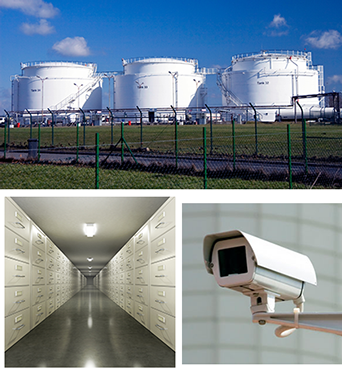Visual Fire Detection (VFD)
Visual Detection Systems (VFDS)
FireVu (VFDS)

Copyright 2019 Australian Fire Enterprises ABN 72 079 715 067 | Privacy Policy | Contact Us

About VFDS
VFDS is now firmly established worldwide as making a major contribution to improve fire safety. It is used extensively in areas that have traditionally been the most challenging for fire safety professionals (such as large voluminous areas) to provide the earliest possible detection of fire.
VFDS ensures fast detection of a fire incident at its source, with the incident visible to the user enabling appropriate action to be taken in the shortest possible time. The technology, which has been developed over many years, can utilise standard CCTV cameras (usually existing CCTV security installations) and is an extremely cost effective solution.
Installations can now be monitored remotely using internet capable devices allowing 24 hour monitoring from around the globe and 24 hour a day fast response, remote testing and diagnosis of the system, whilst also ensuring easier integration with security and facilities management systems.
Why VFDS is needed?
Video Fire Detection systems biggest advantage is that it detects fire at the source, whatever the camera can see the system can detect.
In the case of large voluminous areas thermal barrier and stratification are the two biggest causes of conventional detection systems missing alarms.
FireVu is an advanced embedded Video Fire Detection (VFDS) server designed to operate over an IP network. Using D-Tec’s advanced, mathematical algorithms it is capable of determining the presence of fire within each of its available analogue camera inputs (PAL or NTSC). Operators can be alerted either remotely over the system’s network or locally via relay outputs.
Each camera image can handle up to 16 fully independent, configurable zones, allowing the user complete flexibility on setting up the areas to be protected with their required sensitivity levels. System configuration is carried out via a series of web pages using a browser such as Internet Explorer, while system monitoring and reviewing is carried out using D-Tec’s NetVu ObserVer client software.
All alarm events are recorded to disk with configurable pre and post event video, allowing the operator to witness (and download) the event, including who or what created it.
The system is a 19” rack-mountable unit, utilising in-house manufactured Visual Signal Processors (ViSPs) to process the images.
Each unit possesses 16 configurable relay outputs and can accept up to 16 alarm inputs. Numerous servers can be joined to a network to create a multi-camera system for larger installations.



